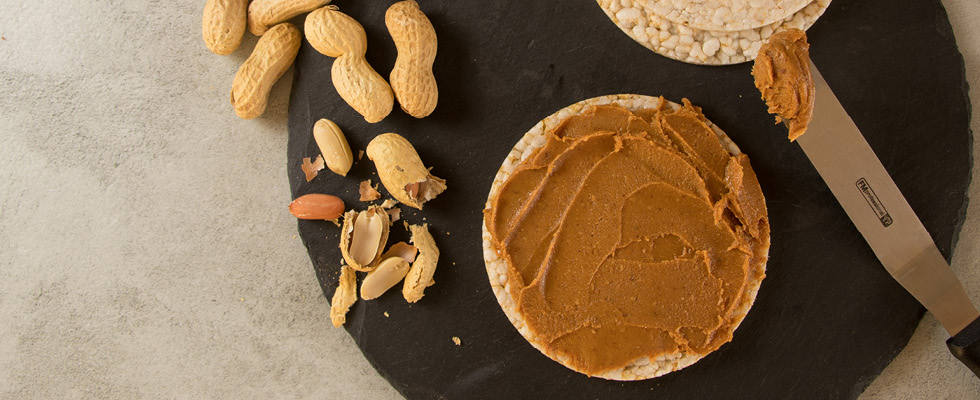
Thermal treatments, such as pasteurization, heating and cooling, feature in the manufacture of multiple food and beverage products. Many of these treatments use heat exchangers, but manufacturers must take various factors into consideration when choosing the right heat exchanger for their process, particularly when it comes to the physical properties of the product itself.
This article will look at five of the most challenging foodstuffs in terms of thermal processing. It will then explore possible heat exchanger solutions to help manufacturers handle those foodstuffs correctly and efficiently.
Highly Viscous Materials
Highly viscous foods, including nut butters and other fat-based products, can be almost solid at low temperatures. This creates a number of challenges, one of which is physically moving the material through the heat exchanger. Other considerations include preventing the product from fouling the surface of the heat exchanger (which reduces thermal efficiency) and ensuring an even temperature throughout.
Nut butter can be one of the most difficult products to heat, cool or pump, and so standard rotating scraped surface heat exchangers (SSHEs) are often not up to the job. A heavy-duty SSHE with a larger motor and bigger scraping rods, together with extra mounting supports, can create a heat exchanger that can handle even the toughest foodstuffs.
Products Containing Pieces
The challenge when dealing with pieces of product is ensuring the mixture moves through the process at a constant speed. This ensures the correct temperatures are maintained for the required time without damaging the physical integrity of the product. This type of product can contain anything from small, diced vegetables to large fruit pieces. Many manufacturers
also process a range of products using the same equipment, meaning processing lines need to be flexible—capable of working with both hard and soft products (such as root vegetables and berries) across a range of sizes.
For this type of product, a reciprocal SSHE is perfect. Separately controlled hydraulic scrapers are available in a range of designs and are fully controllable so a variety of products can be moved gently but effectively through the heat exchanger, providing timely and efficient heat transfer without damaging product integrity.
Thermally Challenging Products
Some ingredients, such as eggs or chocolate, are sensitive to temperature and must be processed at precise temperatures to avoid damaging the product. Liquid egg, for example, is extremely delicate, as the proteins in egg are more sensitive to heat than other products, such as milk or juices. This is due to the fact that the white and yolk are distinct components with different compositions and behaviors. When mixed, they interact mutually: Egg white is denatured at 136 F, while yolk is denatured at 149 F.
Because of this, pasteurizing liquid egg can have a number of unwanted effects, including gel formation and softening of the yolk, irreversible denaturation of the proteins or changes to the appearance. If not handled correctly, thermal pasteurization can decrease protein content, change physical characteristics such as texture and color and increase product viscosity.
Choosing the right pasteurization regime and equipment is therefore vital to minimize and prevent such unwanted effects. Depending on the required handling, corrugated tube heat exchangers or SSHEs are ideal for processing liquid eggs and other egg-based products.
A system that uses three rotary scraped surface heat exchangers in series has
been used successfully to commercially temper chocolate. The first heat exchanger raises the temperature by 19 C, the second cools it back down by 2 C and the final heat exchanger raises it again, allowing the chocolate to be transported and worked elsewhere. This system is also significantly quicker than traditional batch-based tempering.
Delicate Products
Many sauces—and some dairy products such as thick cream—need to be handled delicately in order to avoid splitting or shearing, while careful temperature control is required to avoid the creation of undesirable flavors, such as a burnt taste.
Tomato-based sauces, white sauces, mayonnaise, béchamel sauce, pesto sauce and dressings are all examples of products where traditional plate or tubular heat exchangers can easily burn or freeze the product because of their static nature. Heat exchangers used in the production of sauces must also work with high viscosity fluids and preserve any particles in the food without breaking them.
Once again, the solution is a gentle yet thermally efficient reciprocating SSHE.
Dense Materials
Globally, there is increasing interest in using heat exchangers to process mechanically deboned meat (MDM), meat slurry and viscera components. One advantage is that heat exchangers have the potential to generate products with better quality, at lower cost and with less waste and lower energy consumption than via traditional methods of heating and cooling MDM.
Many of these products have high fouling potential (which limits heat transfer) but also need delicate handling to preserve their integrity. In addition, their thick nature means it can be difficult to achieve the required temperature all the way through the material.
This is because of a phenomenon known as “slugging,” whereby a channel of warmer material travels down the center of the product, while the material at the tube wall does not move. If the cooling medium is cold enough (for example, 23 F or lower), this can create a risk that the product at the tube wall will freeze, while the material in the center is not cooled sufficiently.
Heavy-duty scraped-surface heat exchangers have been employed commercially to keep meat viscera and similar materials below a specified temperature of 39 F. Modifications for a project like this should include adapting the internal scraper configuration to achieve the necessary performance and implementing a heavy-duty gearbox to withstand the higher torques required to keep the product moving. Thorough mixing in the heat exchanger ensures slugging does not occur.

